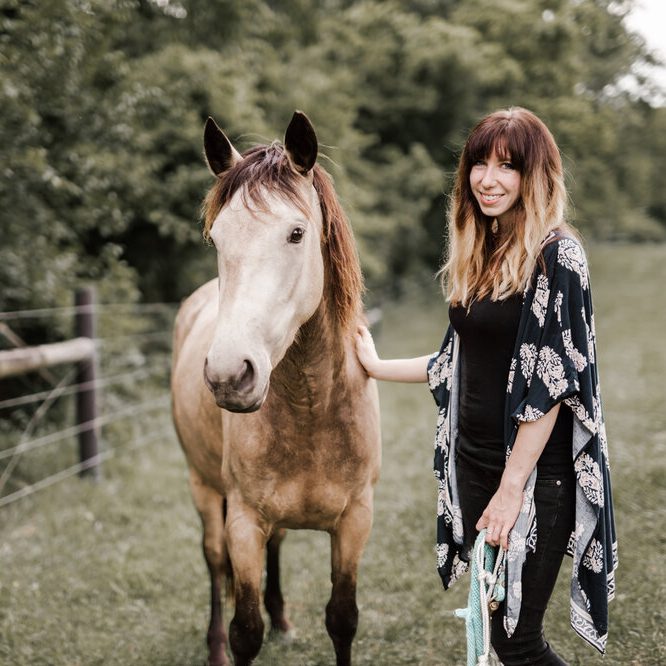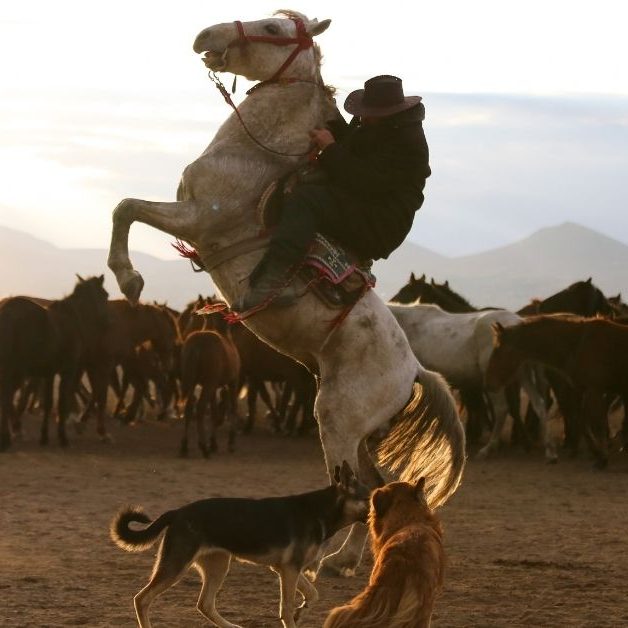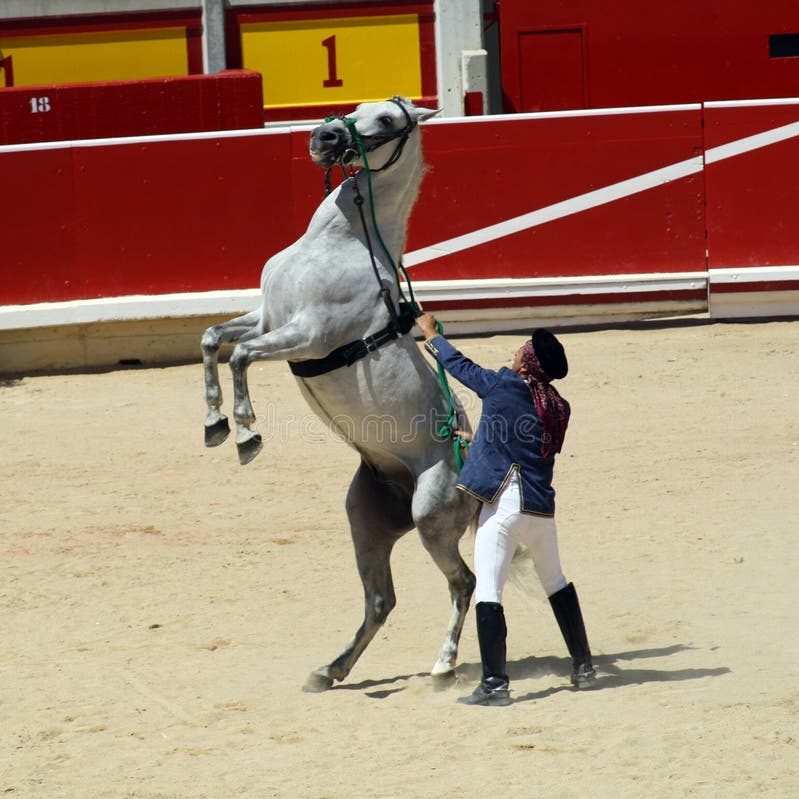Introduction: Understanding the Process of Taming
Taming a horse is a delicate and rewarding process. It involves building a relationship based on trust, respect, and communication between the horse and handler. Contrary to popular belief, taming is not about forcing the horse to submit but about encouraging it to cooperate. Understanding the horse’s behavior is crucial in this process. Patience is essential, as each horse will have its unique personality and pace of learning. In this guide, we will explore the principles, techniques, and tools needed for successfully taming a horse.
Knowing Your Horse’s Behavior
Understanding Body Language
Horses communicate largely through body language. Observing their posture, ear position, and tail movements can reveal their emotional state. For instance, a relaxed horse may have a lowered head and soft eyes, while a tense horse will often have raised ears and a tight body.
Recognizing these signals helps you respond appropriately. A calm approach can ease a nervous horse, while aggressive actions may escalate fear. Understanding a horse’s body language is foundational in building trust. The more you know about your horse, the smoother the taming process will be.
Establishing Trust
Trust is vital in taming a horse. Building trust requires consistent and gentle interactions. Spend time simply being near the horse without imposing any demands. Allow it to approach you at its own pace.
Use treats or a gentle voice to create positive associations. Gradually introduce physical contact, starting with gentle strokes on the neck. Trust-building takes time, and rushing it can lead to setbacks. Always be patient and give your horse the space it needs to feel secure.

Basic Equipment for Taming
Essential Tools
Before starting the taming process, gather essential tools. A halter and lead rope are fundamental for safe handling. Choose a nylon or cotton halter, ensuring it fits comfortably without pinching.
A sturdy grooming brush is useful for cleaning the horse’s coat and promoting bonding. Additionally, a clicker can be a valuable tool for positive reinforcement during training. Having the right equipment ensures a smoother experience and enhances safety for both you and the horse.
Safety Gear for Handlers
Always prioritize safety when taming a horse. Wearing appropriate gear such as sturdy boots and gloves can protect you from accidental kicks or bites. A helmet is advisable when you plan to ride the horse later on.
Knowledge of basic safety practices is essential. Always approach the horse calmly and speak softly. Make sure to position yourself within the horse’s line of sight to avoid startling it. Being prepared reduces the risk of injury and promotes a positive training environment.
The Taming Process: Step by Step
Initial Groundwork
Before mounting a horse, groundwork lays a strong foundation. Begin by leading the horse around the pen using the halter and lead rope. Keep the pace slow and consistent, allowing the horse to adjust to your presence.
Next, practice yielding exercises. Ask the horse to move away from light pressure on the lead rope. This exercise helps the horse learn to respond to your cues. Respecting the horse’s pace is crucial during groundwork. Build confidence and comfort level gradually, as this will significantly impact the next steps.
Introducing the Saddle
Once the horse is comfortable with groundwork, introduce the saddle. Start by placing the saddle pad on the horse’s back. Allow it to become accustomed to the feel of the pad before adding the saddle itself.
Use treats or gentle strokes to keep the horse relaxed. Secure the saddle while making sure it fits correctly. It’s important to check for any signs of discomfort during this process. Rushing can lead to negative experiences, so take your time ensuring the horse accepts the saddle comfortably.

Accepting the Rider
Mounting the Horse
Once your horse is accustomed to the saddle, the next step is mounting. Approach from the left side, as this is standard practice. Use a mounting block if necessary to make the process easier for both you and the horse.
Make sure the horse is calm before mounting. You may want to have a helper hold the horse initially. Once you are in the saddle, keep your movements gentle and steady to avoid startling the horse. Be prepared for initial reactions and take it slow.
Working on Riding Basics
After successfully mounting, start with light riding exercises. Begin with walking around the pen, allowing the horse to adjust to your weight and cues. Use gentle leg pressure to signal the horse to move forward.
Introduce simple commands like turning and stopping. Positive reinforcement, such as treats or praise, should follow successful responses. Always maintain a relaxed and confident posture to help the horse feel more at ease. Regular practice will reinforce the horse’s trust in you, leading to a successful taming experience.
Building on Progress
Consistency is Key
Once you’ve begun the taming process, consistency is crucial. Regular, short training sessions are often more effective than infrequent, long ones. Consistent practice helps reinforce learning and build a stronger bond between you and the horse.
Set specific goals for each session, whether introducing new commands or enhancing existing ones. Celebrating small achievements boosts the horse’s confidence and keeps you both motivated. Patience and persistence are vital. Understand that setbacks are natural and should be met with a calm and encouraging approach.
Seeking Professional Help
If challenges arise during the taming process, seeking professional help can be beneficial. Experienced trainers can provide valuable insights and techniques tailored to your horse’s needs. Understanding the horse’s personality is often critical to effective training.
Consider joining workshops or clinics that focus on natural horsemanship. Many trainers offer specialized programs that address specific challenges like fear, resistance, or behavioral issues. Engaging with professionals can provide new tools and perspectives, ultimately enhancing your taming journey.

Understanding the Individual Horse’s Personality
Identifying Unique Traits
Every horse has its unique personality and quirks. Observing these traits is important in the taming process. Some horses may be naturally curious and eager to please, while others can be more cautious and reserved. Understanding these differences can help tailor your approach to each horse.
Spend time with the horse to learn about its preferences. Does it enjoy being groomed? Is it comfortable with touch? These observations inform your training techniques and timing. For example, a shy horse may need more gentle encouragement, while a bold horse might respond well to challenges. Adjusting your methods based on the horse’s personality fosters a more effective and compassionate training environment.
Building a Routine
Creating a consistent routine is another effective strategy for taming a horse. Horses thrive on predictability, which helps them feel secure. Establishing a daily schedule that includes feeding, grooming, groundwork, and riding can significantly benefit the taming process.
Routine allows both you and the horse to anticipate activities, reducing anxiety. Regular interactions also reinforce the training concepts. Make adjustments as necessary based on the horse’s progress and comfort level. By maintaining a structured approach, you enhance trust and make the taming process smoother and more enjoyable for both parties.
Final Thoughts: Embracing the Journey
The Emotional Connection
Taming a horse is not just about techniques; it is also about forming an emotional connection. As you spend time together and navigate challenges, you and your horse will develop a bond that enhances both trust and communication. This relationship is at the heart of successful horsemanship and can lead to lifelong companionship.
Always celebrate the small victories along the way. Whether it’s mastering a new command or simply enjoying each other’s presence, these moments matter. Patience and empathy allow for growth, helping the horse feel secure and loved. Taming a horse is a rewarding journey filled with opportunities for learning and connection. Cherish each step of this journey, knowing that both you and your horse will emerge stronger and more united.
Conclusion: The Rewards of Taming a Horse
In conclusion, taming a horse is a fulfilling journey that requires patience, understanding, and dedication. By observing behavior, building trust, and using the right techniques and tools, you can create a strong bond with your horse.
The process not only improves your horsemanship skills but also fosters a deep connection rooted in partnership. Each step, from groundwork to accepting a rider, builds a foundation for a lifelong relationship.
Embrace the challenges and joys that come with taming a horse. The rewards of trust, companionship, and shared experiences will enrich both your life and your horse’s. Whether for riding or companionship, the journey of taming a horse opens doors to endless possibilities and adventures.
